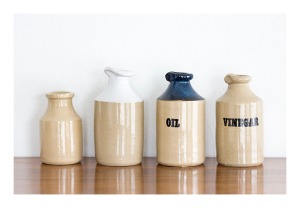 Gempo mugs
Gempo mugs
made in Japan 1962-74
These mugs feature the abstract, large –faced form that marks all Gempo pottery. They are also particular to the 70s; with stylised features, and the stoneware pottery glazed in rustic creams and browns. We’re in the 70s folks!
I have featured Gempo egg cups [a family featuring nan & pop, mum and dad, and children] and a Gempo money box [Leo the Lion] previously. Now we have three mugs – a hippo [spotted]; elephant [with trunk as the handle] and koala [wearing dungarees.]
As the 70s becomes more collectable, so these stoneware pieces are becoming sought after. It was something that I did not predict, but have been caught up in.
The three mugs are in excellent vintage condition and are for sale: $AU45



